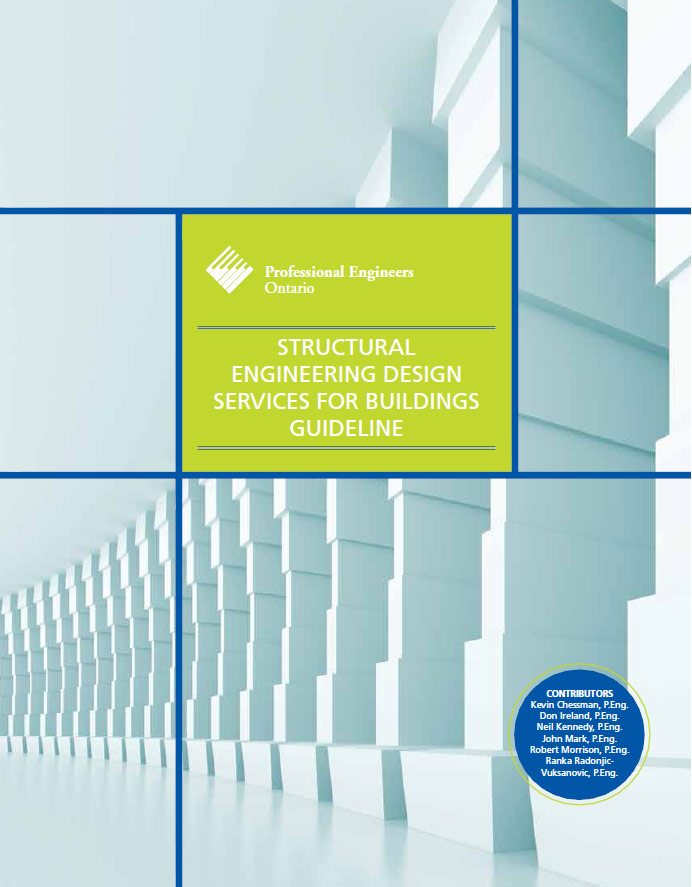The purpose of this guideline is to provide best practices for engineers performing structural engineering design services in buildings, with special emphasis on the duties to employers, clients and the public. The guideline covers the following areas:
- Examples of the division of structural engineering design in buildings where professional engineering work is carried out by different practitioners and the variations in their contractual relationships;
- difficulties associated with the division of structural engineering design for a building between multiple practitioners providing services for different clients and suggested procedures for mitigating risks of non-coordination, incomplete design and responsibility gaps;
- the term “structural integrity of the building” and how this term relates to the services provided by the various contributors to the overall structural design of building;
- limits of responsibility allocated to the various practitioners providing structural engineering services for the building structure and components;
- practitioner responsibility for review of shop drawings and the associated responsibilities for that review;
- identifying a single practitioner as the “primary structural engineer” responsible for coordinating all structural engineering design work done by the various practitioners; and
- PEO policies for sealing documents and identifying the proper procedures to be followed by the practitioners in various structural engineering design roles.
Click HERE for Structural Engineering Design Services for Buildings Guideline.









